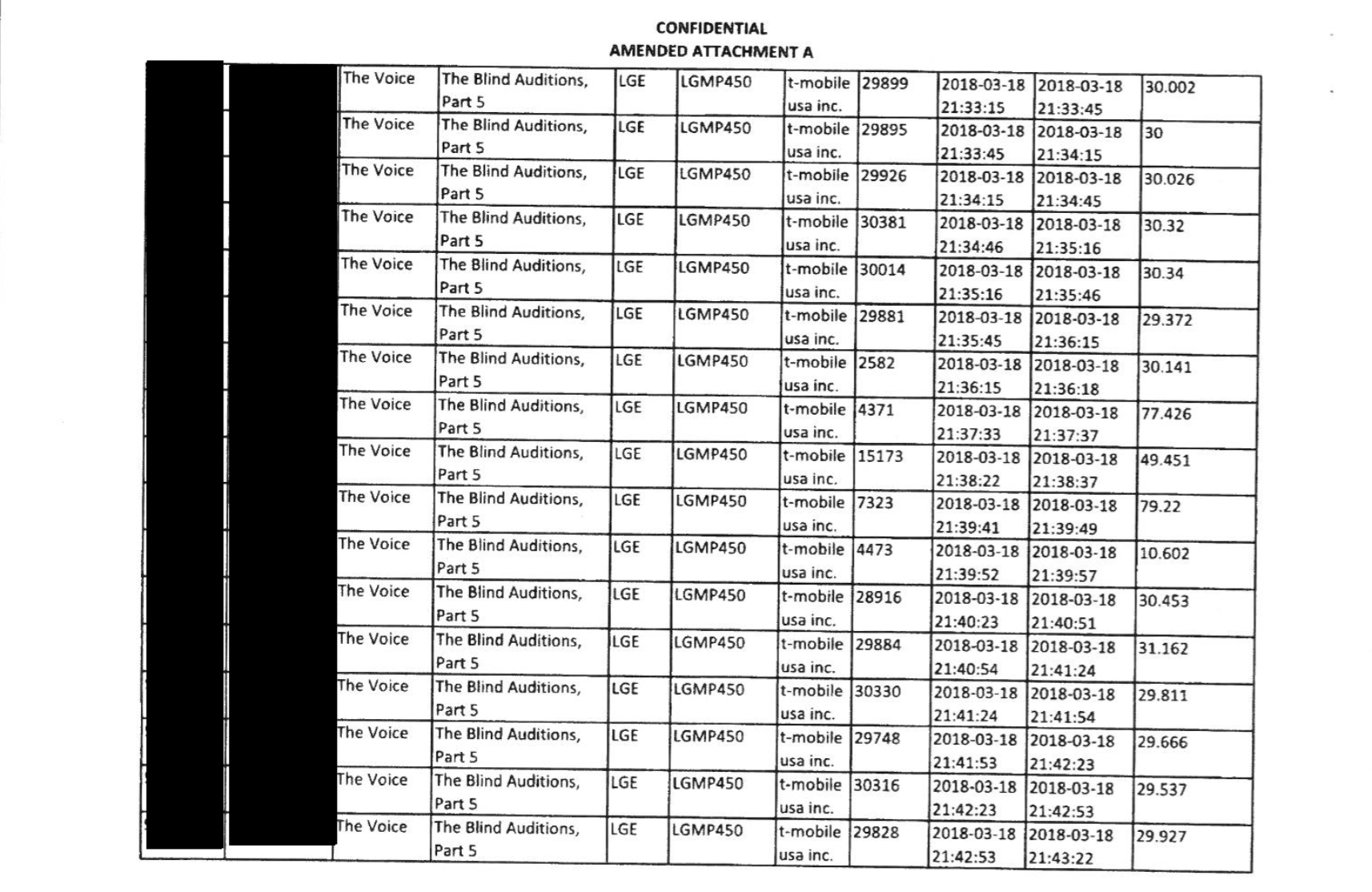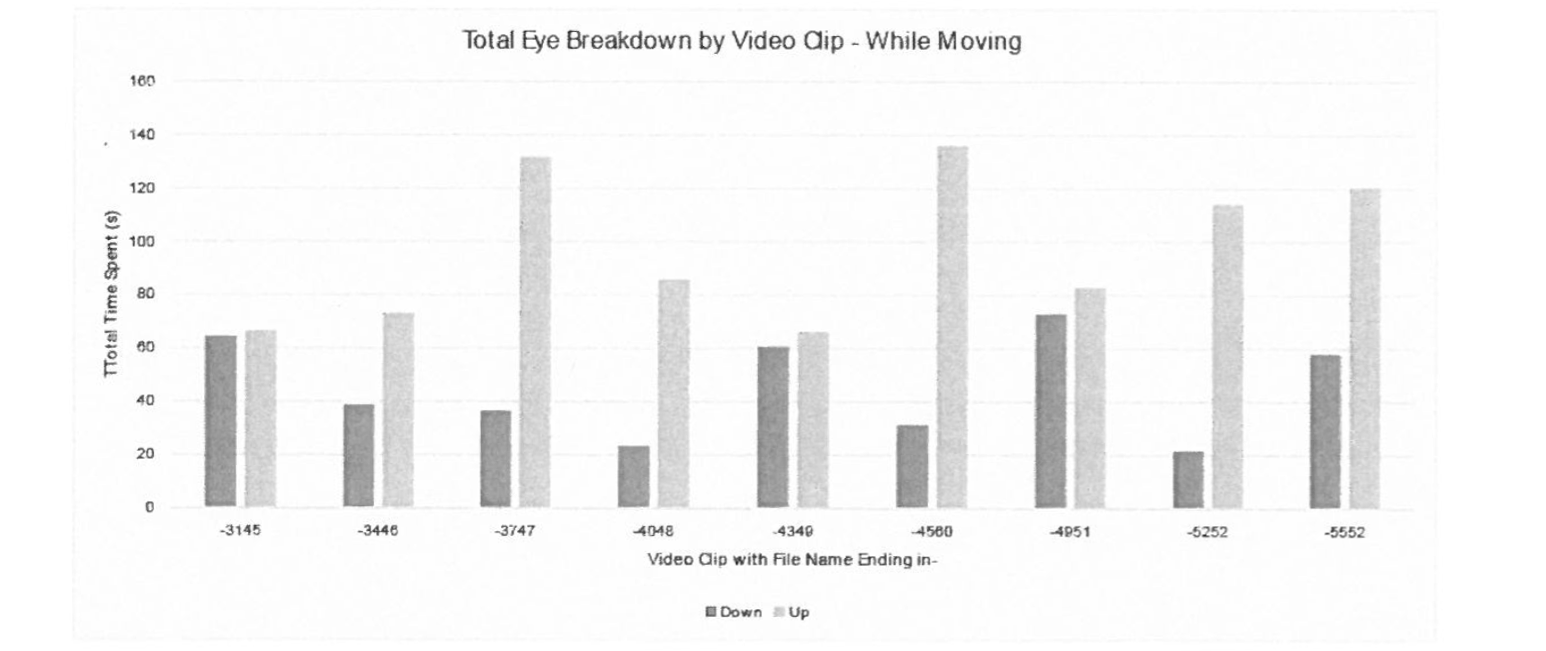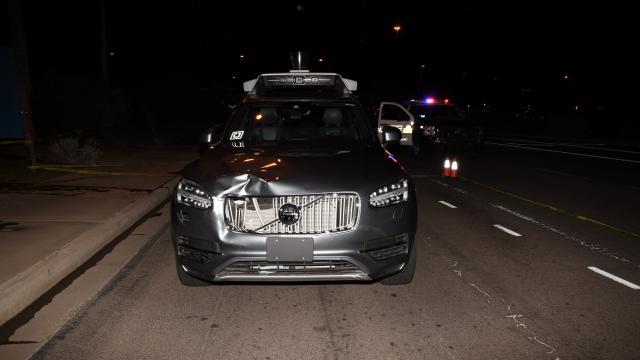The crash of an Uber self-driving car that killed an Arizona woman in March was “entirely avoidable,” according to police reports released by the Tempe Police Department. Mobile phone data obtained by police suggests that the Uber operator was also streaming an episode of reality show The Voice at the time of the fatal incident.
Photo: Tempe Police Department
The documents, released to Gizmodo in response to a public records request, show that Tempe police found that the operator of the Uber autonomous vehicle could likely have avoided the fatal crash, had she been paying attention – but instead she was likely watching a video on her phone. Police also noted that Uber’s vehicles apparently did not alert operators to take over the vehicle during incidents.
After the crash, Uber laid off 300 test drivers from its autonomous vehicle unit and halted testing in Arizona. An Uber spokesperson noted that using any device behind the wheel, even a smartwatch, would be considered a fireable offence.
The crash killed Elaine Herzberg, a 49-year-old woman who was walking across the street with a bicycle when she was struck by the Uber vehicle. Uber’s autonomous technology failed to detect Herzberg, and the human driver who was supposed to act as a safeguard appeared distracted in previously released footage.
Now, several documents in the 318-page report suggest the driver, Rafaela Vasquez, may have been streaming an episode of The Voice at the time of the crash.
“The driver in this case could have reacted and brought the vehicle to a stop 42.61 feet [13m] prior to the pedestrian,” one of the documents concluded.
However, Tempe police also noted that Uber’s vehicles did not alert autonomous vehicle operators about when to take control of their cars.
“During the current development phase, vehicle operators are relied upon to perform evasive maneuvers,” one Tempe detective wrote. “I was not able to find anywhere in the literature that the self-driving systems alerts the vehicle operator to potential hazards or when they should take manual control of the vehicle to perform an evasive manoeuvre.”
Uber’s spokesperson said that the company is reviewing safety practices and procedures and has hired former US National Transportation Safety Board chair Christopher Hart as a safety adviser.
In a statement, an Uber spokesperson said the company’s policy prohibits drivers of its autonomous vehicles from using mobile devices while behind the wheel.
“We continue to cooperate fully with ongoing investigations while conducting our own internal safety review. We have a strict policy prohibiting mobile device usage for anyone operating our self-driving vehicles,” the spokesperson told Gizmodo. “We plan to share more on the changes we’ll make to our program soon.”
Following the crash, police obtained warrants for work and personal mobile phones belonging to Vasquez. Police also sent search warrants to YouTube, Netflix and Hulu to recover Vasquez’s viewing history on her devices around the time of the accident.
The crash occurred around 10PM – more specifically, the report states that video from inside the car “ceases recording with a UTC time of 4:58:50 [9:58pm local time], just moments after striking the pedestrian”.
The data Hulu provided to authorities shows Vasquez was streaming an episode of The Voice called “The Blind Auditions, Part 5” between 9:16PM and 9:59PM local time, according to account history turned over to the police by Hulu’s legal team. In response to the warrants, YouTube and Netflix said that Vasquez was not actively viewing video on either platform at the time of the crash.

Screenshot: Tempe Police
Hulu’s legal team initially released viewing data for another user’s account, according to the police reports, then corrected the error in response to follow-up questions from the Tempe police and released Vasquez’s data.
In reviewing footage collected from Uber’s own cameras, which filmed the car’s view of the road and Vasquez as she was driving, police determined that Vasquez was frequently distracted.
“She appears to be looking down at the area near her right knee at various points in the video,” the report reads. “During the 9 video clips, I found that the driver looked down 204 times with nearly all of them having the same eye placement at the lower center console near her right knee. One hundred sixty-six of these instances of looking down occurred while the vehicle was in motion.”
Vasquez was appeared to laugh or smirk during moments when she was looking towards her knee, the report added.
Police didn’t just note the number of instances her eyes were off the road, they also focused on the aggregate amount of time that Vasquez was apparently distracted.
“The vehicle was in motion for 21 minutes, 48 seconds. Of that time, the total amount of time the driver’s eyes were averted from the roadway was 6 minutes, 47.2 seconds, or approximately 32% of the time,” police found.

Graphic: Tempe Police
However, Vasquez did call 911 after the crash occurred. She also passed a field sobriety test. Approximately half an hour into the test, the officer administering it reassured Vasquez that she was unlikely to face criminal charges, according to the officer’s bodycam video.
Vasquez was alone in the vehicle the night of the collision – a standard practice for Uber’s autonomous vehicle operators. Several other autonomous vehicle companies have opted to have two operators in their cars while testing.
This was Uber’s practice when it started testing, CityLab reported, but the company switched to single operators in late 2017. An Uber spokesperson told CityLab at the time that the second operator had been present strictly to take notes and was not expected to maintain safety.
However, a co-driver might have noticed Herzberg walking into the road. In bodycam footage following the crash, an officer who spoke to Vasquez asked about the two-person policy. “Did you have a passenger? Because I know sometimes you guys ride two people together,” the officer asks.
In a preliminary report released late last month, the US National Transportation Safety Board found that Uber’s vehicle detected Herzberg a mere six seconds before the crash, and initiated emergency braking 1.3 seconds before impact. Uber’s system is not designed to alert the operator of a potential hazard, the NTSB report found.
The NTSB’s investigation into the crash is ongoing and its final report has yet to be released.
